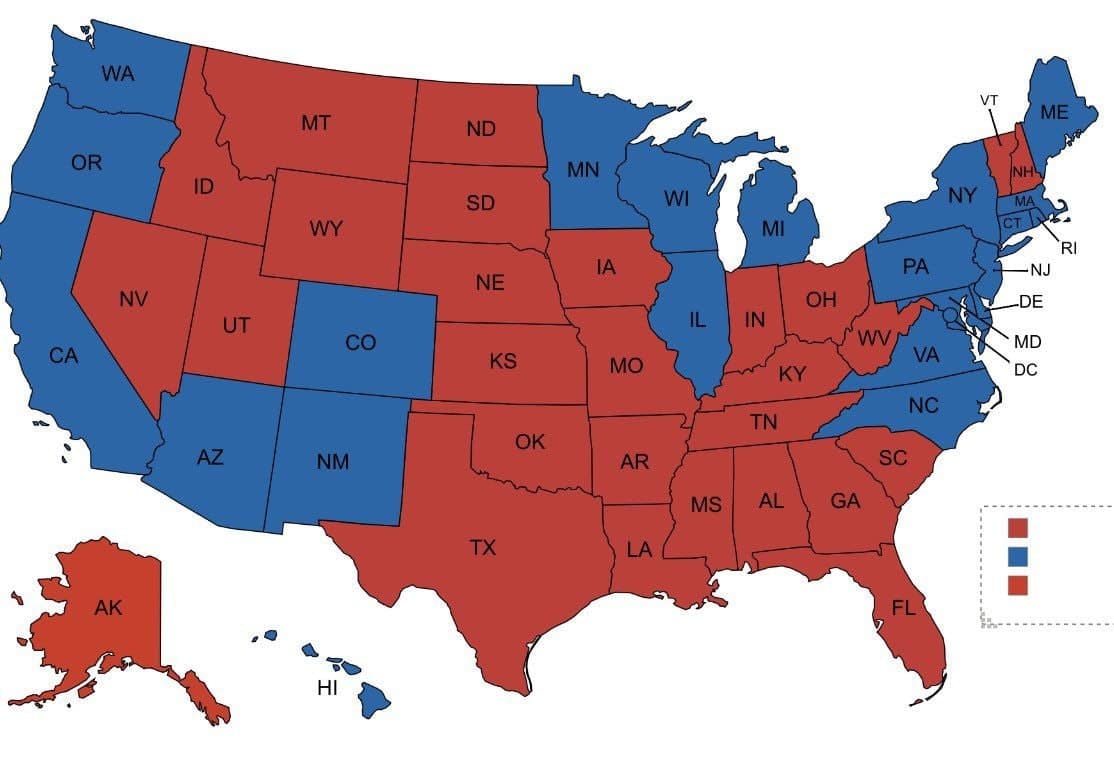2028 Governors" Map Forecasts Unprecedented Political Polarization Across U.S.
As the nation heads toward the 2028 gubernatorial elections, political analysts are predicting a historic level of polarization among state governors, potentially reshaping the landscape of American politics. With both major parties increasingly entrenched in their ideologies, the upcoming elections are expected to yield a starkly divided map of state leadership, underscoring the growing chasm in American political life.
Background & Context
The United States has long been characterized by a two-party system, with Democrats and Republicans vying for control at all levels of government. However, recent trends indicate a shift toward more extreme partisanship, especially at the state level. The polarization is not merely a reflection of differing policy preferences but also a manifestation of deep-rooted cultural divides. The 2028 elections are anticipated to mark a significant milestone in this trend, as governors are expected to align more closely with their party"s ideological extremes.
This growing polarization can be traced back to a series of events over the past decade, including contentious redistricting battles and high-stakes legislative sessions. In a recent development, for instance, Texas House Democrats fled the state in an effort to block a GOP redistricting plan, exemplifying the lengths to which parties are willing to go to secure their political interests. This kind of strategic maneuvering is likely to become more common as states prepare for the 2028 elections.
Key Developments
Political analysts are closely monitoring several key factors that are likely to influence the 2028 gubernatorial elections. First, the ongoing demographic shifts in the U.S. are creating new battlegrounds, particularly in the Sun Belt states, where population growth is leading to increased political significance. States like Arizona and Georgia, which have recently flipped from Republican to Democratic control in key elections, are poised to play pivotal roles in the upcoming gubernatorial races.
Moreover, the ideological polarization within both parties is becoming more pronounced. Progressive factions within the Democratic Party are increasingly pushing for bold, transformative policies, while the Republican Party is leaning toward populism and, in some cases, far-right ideologies. This divergence was evident in the recent primaries for governor positions, where candidates had to appeal to their respective bases, often at the expense of broader, moderate appeal.
Broader Impact
The potential outcomes of the 2028 elections could have far-reaching implications for governance and policy-making across the country. Experts warn that if the trend toward polarization continues, it may result in increased legislative gridlock, as governors may prioritize partisan agendas over bipartisan cooperation. This could hinder progress on critical issues such as healthcare, education, and climate change, which require collaborative efforts across party lines.
Historical comparisons highlight the importance of this moment in American politics. The last time the U.S. experienced such pronounced polarization was during the Civil Rights Movement, when deep cultural and political divides led to significant upheaval. Today, while the issues may differ, the entrenched positions and lack of willingness to compromise suggest a similar trajectory, with the potential for significant societal ramifications.
What"s Next
Looking ahead, the 2028 gubernatorial elections will be a pivotal moment for American politics. As candidates begin to emerge, both parties will need to navigate the complexities of their respective bases while attempting to appeal to a broader electorate. Early indicators suggest that the primaries will be fiercely contested, with candidates from both sides pushing for more extreme positions to secure their party"s nomination.
Moreover, as state legislatures convene and prepare for the elections, the potential for further polarization looms large. With governors playing a critical role in shaping domestic policy and responding to national issues, the outcome of these elections will likely set the tone for the next decade of American governance. As we approach 2028, all eyes will be on the evolving political landscape and the implications it holds for the future of the nation.

![[Video] Vladimir Putin delivers speech in military uniform](/_next/image?url=%2Fapi%2Fimage%2Fthumbnails%2Fthumbnail-1764621642413-vh08a-thumbnail.jpg&w=3840&q=75)




